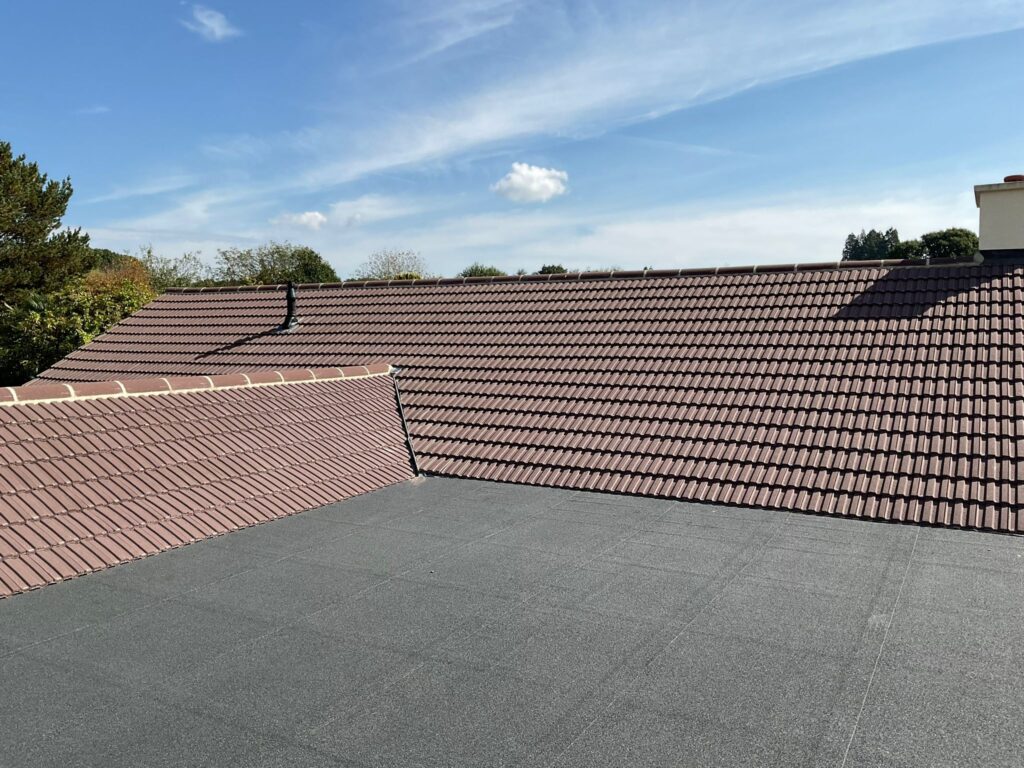The roof is one of the most critical components of any building, protecting it from the elements and ensuring structural integrity. Over time, however, even the best roofs can suffer from wear and tear, leading to the need for either repairs or a full replacement. Deciding whether to opt for partial repairs or a full roof replacement is not always straightforward, and understanding the key factors can help you make the best decision for your property. At MCM Roofing Repairs Warminster, we provide expert advice and services for all roofing needs across Warminster, Wiltshire. In this blog post, we’ll explore the key considerations when choosing between a full roof replacement and partial repairs.
1. Extent of Damage
The first step in determining whether you need a full roof replacement or partial repairs is to assess the extent of the damage. If only a few tiles or sections of your roof are damaged, such as from a storm or general wear, partial repairs may be the most cost-effective and sensible option. However, if the damage is widespread or affecting multiple areas, a full roof replacement may be necessary to ensure the long-term health and safety of your home.
- Partial Repairs: Suitable for localised damage such as small leaks, cracked tiles, or damage from a fallen branch.
- Full Roof Replacement: Needed if there is extensive water damage, large areas of missing or broken tiles, or structural issues with the roof.
2. Age of the Roof
The age of your roof is another crucial factor to consider. Most roofing materials have a lifespan of 20 to 50 years, depending on the type of material used and the climate conditions in your area. If your roof is nearing the end of its expected lifespan, even minor repairs may not provide a long-term solution, and a full replacement could be the most practical option.
- Partial Repairs: Ideal for newer roofs that still have several years of life left and only need small fixes.
- Full Roof Replacement: Recommended if your roof is older and showing signs of widespread wear, even if some areas are still intact.
3. Cost Considerations
While partial repairs may seem like the cheaper option, it’s essential to consider the long-term costs involved. Continually repairing an ageing or extensively damaged roof can add up over time, making a full replacement the more cost-effective solution in the long run.
- Partial Repairs: Lower initial cost, but could lead to recurring repair expenses if the roof is approaching the end of its lifespan.
- Full Roof Replacement: Higher upfront cost, but it can save money in the long run by reducing the need for frequent repairs and improving energy efficiency.
4. Energy Efficiency and Insulation
A new roof can significantly improve your home’s energy efficiency by providing better insulation. If your current roof is old or poorly insulated, it may be contributing to higher heating and cooling costs. In this case, a full roof replacement with modern, energy-efficient materials can help reduce energy bills and increase the overall comfort of your home.
- Partial Repairs: If the roof’s insulation is still in good condition, repairing damaged sections might be sufficient.
- Full Roof Replacement: A new roof with improved insulation and ventilation can drastically reduce energy consumption and enhance your home’s energy performance.
5. Aesthetics and Property Value
The appearance of your roof plays a significant role in the overall aesthetic of your home. If your roof is worn, discoloured, or uneven due to patchwork repairs, it can detract from your property’s curb appeal. A full roof replacement can restore the beauty of your home and even increase its market value if you’re planning to sell in the near future.
- Partial Repairs: Can be effective for maintaining the appearance of a relatively new roof.
- Full Roof Replacement: Ideal for transforming the look of your home, especially if the existing roof has become an eyesore.
6. Future Planning
If you’re planning to stay in your home for many years, investing in a full roof replacement might make more sense in the long term. On the other hand, if you plan to sell the property soon, partial repairs may be enough to address immediate issues without the cost of a complete replacement.
- Partial Repairs: Suitable for short-term fixes or if you plan to move soon.
- Full Roof Replacement: A long-term investment that can increase the value of your home and eliminate the need for future repairs.
Conclusion
Choosing between a full roof replacement and partial repairs depends on several factors, including the extent of the damage, the age of your roof, cost considerations, and your long-term plans for the property. At MCM Roofing Repairs Warminster, we offer expert assessments to help you make the right decision for your home. Whether you need targeted repairs or a complete roof overhaul, our experienced team in Warminster, Wiltshire, is here to ensure your roof remains in top condition.
Call us on: 01985 802 992
Click here to find out more about MCM Roofing Repairs Warminster
Click here to complete our contact form and see how we can help with your roof.

